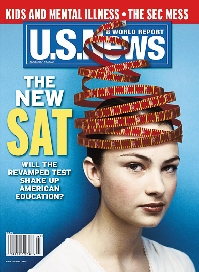
Understanding the changes to the SAT test: How to study and prepare effectively
Studying and preparing for the SAT can seem like a daunting proposition for any student. Parents as well may find themselves overwhelmed or at a loss for methods to help their children review core language skills and mathematics. Furthermore, many parents may not be aware of the changes that have re-shaped the structure and scoring of the test in recent years. Here is a brief overview of the most recent changes that have impacted the SAT test:
Recent Changes to the SAT Test:
Back in 1994, several antonym questions were removed from the test, and replaced with questions focusing on critically reading and interpreting passages. The year 1994 also marked the introduction of calculators, which were allowed for the first time in the SAT to assist students in utilizing technology and computing skills to determine the answers to mathematics section questions about slope, probability, median and mode.
The year 2002 was a historic year for SAT scoring procedures. For the first time, the College Board gave students the option of taking the SAT several times in order to improve scores. Furthermore, it was decided in 2002 that SAT scores should not be released to colleges or universities until a student had seen and approved the score.
The SAT test was enhanced again in 2005, when the College Board opted to increase the degree of difficulty of the test, in response to the 2002 changes that enabled students to take the test multiple times to improve scores. These changes included the expansion of material covered in the Mathematics section, as well as the addition of more critical reading questions that require solid core language skills. The year 2005 also saw the addition of a new writing section of the SAT test. A new essay was included to further test students’ writing ability.
In 2008, more SAT scoring changes were enacted, as colleges began to request all scores from an applicant’s multiple SAT tests. Other policies regarding scoring the sections of the test occurred in 2008.
~
Preparing for the Critical Reading Section of the SAT Test:
The Critical Reading section of the SAT (formerly known as the Verbal Section) consists of three scored sections. There are two twenty-five minute sections and one twenty-minute section containing multiple choice questions pertaining to reading passages, sentence completion, sentence structure and organization, grammar and punctuation, error identification and vocabulary.
Strengthening core language skills by developing a repertoire of study exercises, regular practice tests/quizzes or other tutoring/SAT prep classes focusing on the areas of reading comprehension, vocabulary, grammar and writing will best prepare students for the Critical Reading Section of the SAT. Working on reading speed and comprehension is also valuable.
The addition of new critical reading SAT questions pertaining to passages in the test makes it increasingly important to focus on the core language skills pertaining to the comprehension of words, sentences and texts, and improve a student’s ability and flexibility to analyze, critique, explain and elaborate on literary texts.
Preparing for the Writing Section of the SAT Test:
The 2005 addition of a new essay section to the SAT Test, which counts for 28% of a students overall score, makes it extremely important to prepare for the writing section of the test. The essays are based on prompts, given by the SAT instructor. The prompts are generally broad or general questions on topics of technology, philosophy, history, world affairs, education, family, or contemporary life. Students are allowed, and encouraged to express their own opinions or observations based on their own life experiences in these essays.
Writing from Practice essay prompts and reading through examples or sample SAT essays written by students is really the best way to prepare for the writing section of the test and improve core language skills such as creative writing, argumentative writing, reflective writing and literary analysis.
Preparing for the Math Section of the SAT Test:
The recent changes to the SAT test, which allow for the use of calculators during some portions of the test have made it increasingly important for students to have access, and experience in using graphing calculators, particularly for higher level geometry problems.
Other recent changes to the Math section of the test include new questions pertaining to Algebra II, scatter plots, and graphing. The majority of the math questions on the SAT are multiple choice questions, broken down into two twenty-five minute sections and one twenty-minute section.
Ultimately, familiarization with the format and style of the SAT test questions is really the best preparation a student can have prior to taking the actual test. SAT workbooks, practice tests, sample essay questions and demo tests can be found online at the College Board website. Various SAT reading and comprehension workbooks are also readily available from local libraries, book stores and online catalogs.

